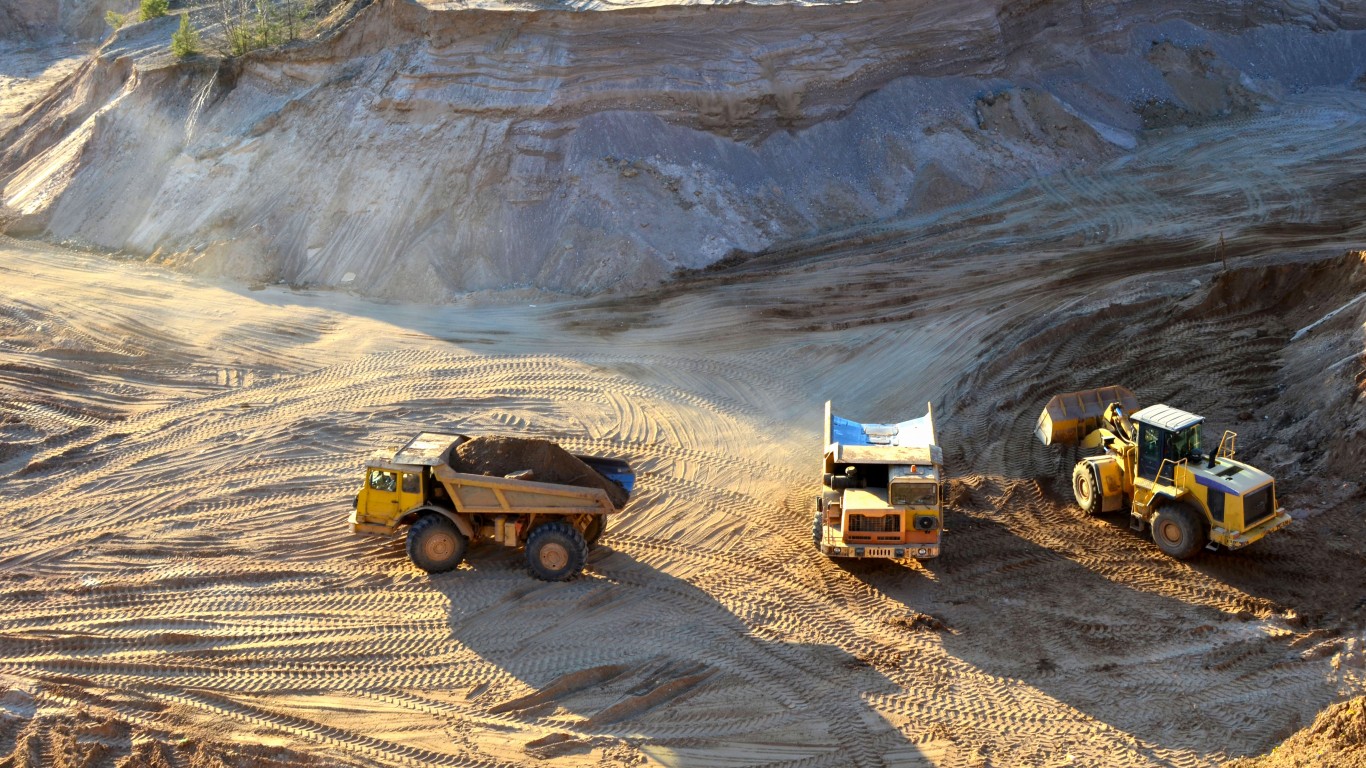
The uranium market has witnessed a significant surge in August. It recorded its sixth consecutive week of gains, reaching heights not seen since April 2022. The robust gains were driven by an upbeat demand forecast and lingering supply concerns amid the chances of sanctions affecting Russia’s nuclear fuel supply.
This presents a promising opportunity for investors to tap the bullishness in the uranium market. In fact, ETFs — Sprott Junior Uranium Miners ETF URNJ, Sprott Uranium Miners ETF URNM, Global X Uranium ETF URA and VanEck Uranium+Nuclear Energy ETF NLR — targeting the sector have outperformed this month.
Demand/Supply Dynamics
A ship loaded with uranium was halted in St. Petersburg due to inadequate insurance coverage, amplifying fears around potential trade disruptions. This underscores the limitations of local production avenues, with Kremlin-controlled Rosatom Corp. the primary provider of fuel for nuclear power plants around the globe, currently fulfilling roughly 50% of the worldwide need for enriched uranium. Additionally, the recent military coup in Niger, West Africa has also threatened supply as the country is rich in uranium.
On the other hand, China’s ongoing mega power plant projects are ensuring a consistent demand trajectory. A similar trend is evident in Western nations as they aggressively strive to reestablish their indigenous uranium processing infrastructures. For instance, France’s nuclear safety authority has prolonged the operational timelines for its older reactors, underscoring the nation’s continued dependence on this contentious energy source.
Further, it is worth mentioning that the European Commission acknowledges the potential role of nuclear energy in the transition to a climate-neutral future. However, this is contingent upon stringent safety and environmental protocols, particularly concerning waste management, in alignment with the European Green Deal’s principles.
Overall, the growing hold of nuclear energy is driving demand and sparking a resurgence in uranium mine operations. A large number of countries across the globe are planning to turn back on nuclear reactors in the face of a growing energy crisis. According to a report from CNBC, there are 486 nuclear reactors either planned, proposed or under construction as of July, amounting to 65.9 billion watts of electric capacity — the highest amount of electric capacity under construction the industry has seen since 2015.
Let’s take a closer look at the ETFs.
Sprott Junior Uranium Miners ETF (URNJ) – Up 15.8%
Sprott Junior Uranium Miners ETF is the only pure-play ETF focused on small uranium miners, selected for their significant revenue and asset growth potential. It tracks the Nasdaq Sprott Junior Uranium Miners Index, which is designed to track the performance of mid-, small- and micro-cap companies in uranium-mining-related businesses. Sprott Junior Uranium Miners ETF holds 29 stocks in its basket and charges 80 bps in annual fees.
Sprott Junior Uranium Miners ETF has accumulated $49.3 million in its asset base and trades in average daily volume of 65,000 shares.
Sprott Uranium Miners ETF (URNM) – Up 13%
Sprott Uranium Miners ETF provides exposure to companies involved in the mining, exploration, development and production of uranium, as well as companies that hold physical uranium or other non-mining assets. It follows the North Shore Global Uranium Mining Index and charges investors 85 bps in annual fee.
Sprott Uranium Miners ETF holds 375 stocks in its basket and has AUM $1 billion in its asset base. It trades in a good volume of 302,000 shares per day on average.
Global X Uranium ETF (URA) – Up 8.1%
Global X Uranium ETF provides investors access to a broad range of companies involved in uranium mining and the production of nuclear components, including those in extraction, refining, exploration, or manufacturing of equipment for the uranium and nuclear industries. It tracks the Solactive Global Uranium & Nuclear Components Total Return Index and holds 46 stocks in its basket.
Global X Uranium ETF has amassed $1.7 billion in its asset base and charges 69 bps in annual fees. It trades in average daily volume of 1.2 million shares.
VanEck Uranium+Nuclear Energy ETF (NLR) – Up 7.4%
VanEck Uranium+Nuclear Energy ETF tracks the MVIS Global Uranium & Nuclear Energy Index, holding 29 stocks in its basket. American firms account for 40.6% share while Canada, Australia and China round off the next three spots.
VanEck Uranium+Nuclear Energy ETF has gathered $85 million in its asset base and trades in a volume of 26,000 shares a day on average. It charges 61 bps in annual fees.
VanEck Uranium+Nuclear Energy ETF (NLR): ETF Research Reports
Global X Uranium ETF (URA): ETF Research Reports
Sprott Uranium Miners ETF (URNM): ETF Research Reports
Sprott Junior Uranium Miners ETF (URNJ): ETF Research Reports
To read this article on Zacks.com click here.
This article originally appeared on Zacks
Is Your Money Earning the Best Possible Rate? (Sponsor)
Let’s face it: If your money is just sitting in a checking account, you’re losing value every single day. With most checking accounts offering little to no interest, the cash you worked so hard to save is gradually being eroded by inflation.
However, by moving that money into a high-yield savings account, you can put your cash to work, growing steadily with little to no effort on your part. In just a few clicks, you can set up a high-yield savings account and start earning interest immediately.
There are plenty of reputable banks and online platforms that offer competitive rates, and many of them come with zero fees and no minimum balance requirements. Click here to see if you’re earning the best possible rate on your money!
Thank you for reading! Have some feedback for us?
Contact the 24/7 Wall St. editorial team.



